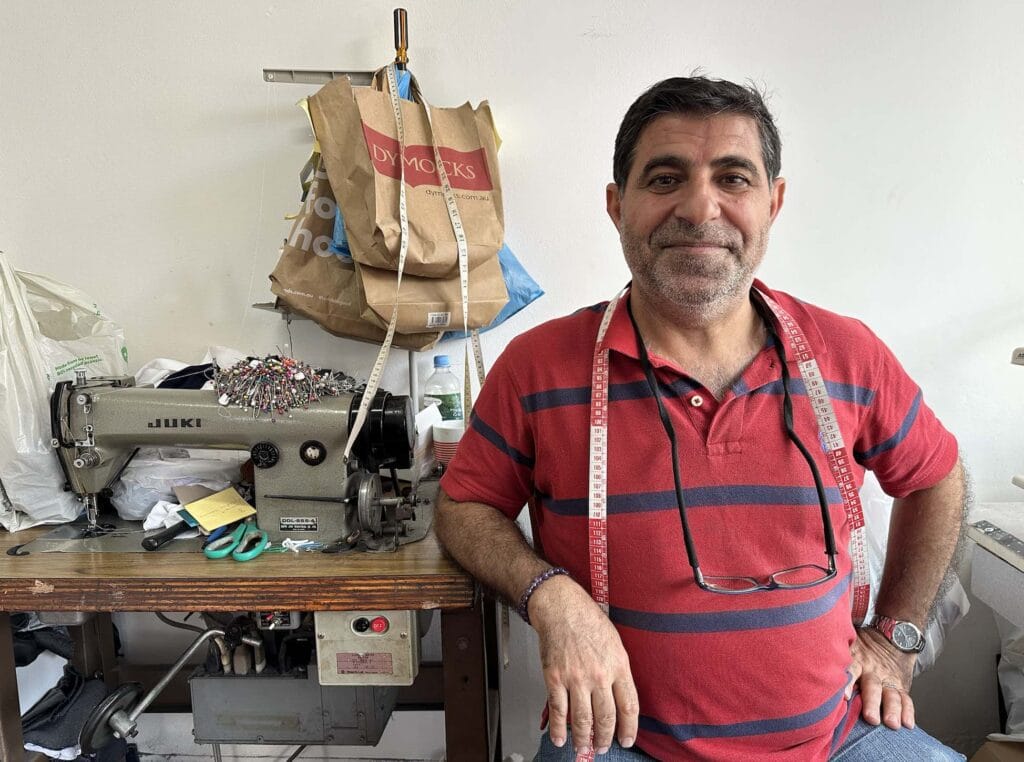Understanding the Tailoring Refine: From Textile Option to Last Suitable for the Suitable Wardrobe
The tailoring process is an intricate interaction of art and scientific research, starting with the important decision of fabric selection and finishing in the specific changes of final fittings. Each fabric kind brings special high qualities that influence not only the visual charm however also the garment's long life and viability for different occasions. Understanding the nuances of customizing methods can raise one's wardrobe to extraordinary degrees of class. As we check out these components further, one have to take into consideration exactly how even the tiniest details can significantly influence the general outcome of one's individual style.
Importance of Material Option
Selecting the appropriate fabric is critical in the customizing procedure, as it directly affects the comfort, durability, and general visual of the final garment (tailor perth). The choice of textile sets the structure for the garment's performance, style, and efficiency. Different fabrics have one-of-a-kind properties, such as breathability, stretch, and weight, which can considerably affect just how the garment drapes and fits the body
Furthermore, material choice impacts the garment's longevity and ease of care. Top quality fabrics can endure wear and tear, preserving their appearance and framework in time, while lower-quality materials may lead to pilling or fading. Additionally, the right fabric adds to the garment's capacity to shift across celebrations and periods, consequently improving flexibility.
A tailored piece made from an ideal textile not just showcases craftsmanship but additionally raises the wearer's self-confidence. Subsequently, comprehending the nuances of textile option is vital for any customizing venture. It guarantees that the end product not just satisfies the aesthetic desires of the customer however also straightens with useful demands, thereby attaining an unified balance in between form and feature in the tailored closet.
Types of Fabrics and Their Usages
Comprehending the various sorts of fabrics readily available is important for making informed decisions throughout the tailoring procedure. Each fabric possesses one-of-a-kind qualities that determine its suitability for particular garments and celebrations.
Its adaptability permits it to be customized into whatever from t shirts to dresses. Its natural elasticity assists garments keep form over time.
Silk exudes high-end and is lightweight, making it best for eveningwear and fragile shirts; nonetheless, it requires careful handling due to its frailty. Linen, with its textured surface, is a prominent option for cozy environments, supplying a ventilated and crisp feeling, yet it wrinkles conveniently, which might influence the garment's appearance.
Synthetic materials, such as polyester and nylon, offer durability and resistance to wrinkles, making them suitable for everyday wear and active clothes. Comprehending these material types and their residential or commercial properties enables much better decision-making, guaranteeing that each tailored piece not just fits well yet additionally straightens with the desired objective and event.
The Tailoring Methods Described
The art of customizing relies upon a range of techniques that transform fabric into well-fitted garments. Central to this process is pattern preparing, where a dressmaker develops templates based on the client's measurements and desired style. This first step guarantees that the garment will fit the user appropriately before any cutting takes place.
Once patterns are developed, reducing techniques come into play. Accuracy is vital as inaccuracies can bring about misfitting garments. Tailors usually make use of different reducing techniques, such as single-layer cutting for complex styles and multiple-layer reducing for effectiveness on standard patterns.
Basting is an additional vital technique, enabling tailors to momentarily stitch textile assemble for a preliminary installation. This technique supplies the chance to assess the drape and general shape before last stitching.
Seaming strategies, including french joints and flat-felled seams, boost the garment's toughness and aesthetic allure. Tailors also utilize techniques such as interfacing and cushioning to give structure and form to specific areas, like shoulders and collars.
Lastly, completing strategies, including hemming and side finishing, make sure the garment's long life while providing a refined appearance. With each other, these techniques develop the foundation of effective tailoring, leading to exquisite, custom-fit clothing.
Suitable Changes and Considerations

Key considerations include the shoulder fit, which ought to neither sag neither limit motion, and the sleeve length, which ought to enable comfortable arm activity while preserving a refined look. In addition, modifications at the waist can refine the shape, with choices to let out or absorb material as needed.
The surge of trousers is another critical variable; it must sit pleasantly above the hips without causing pain, enabling ease of motion. Hemming lengths for both trousers and skirts ought to reflect the user's preferred design while appreciating percentages.

Maintaining Your Tailored Clothing
Correct upkeep of tailored garments is necessary to protecting their fit and appearance gradually. To make sure long life, normal cleansing is paramount. Always follow the care label instructions, which may recommend dry cleaning for delicate fabrics or device washing for even have a peek at these guys more long lasting products. Prevent constant laundering, as this can put on down the textile and change the garment's form.
Storage space is similarly essential; use cushioned hangers for jackets and coats to maintain shoulder framework, and shop trousers folded up nicely or hung to avoid creasing. Safeguard garments from direct sunshine, which can fade colors and damages fibers.
Furthermore, periodic inspections for small repair services can stop larger concerns. Inspect for loose switches, fraying joints, or indications of moth damage, addressing these issues quickly to maintain the garment's stability.
Lastly, take into consideration seasonal rotation. Putting on customized pieces in small amounts allows textiles to recuperate, extending their life expectancy. By executing these upkeep methods, you can guarantee that your customized garments stay as pristine as the day you initially wore them, improving your optimal closet for many years to come.
Final Thought
The tailoring process, incorporating fabric option, experienced strategies, and accurate suitable adjustments, plays a vital duty in producing garments that boost both comfort and design. Each phase contributes to the total effectiveness of the last item, guaranteeing that apparel not only fits well but likewise mirrors individual identity. Understanding the significance of upkeep expands the life of customized garments, solidifying their value in a well-curated wardrobe. A detailed strategy to customizing finishes in a polished and confident appearance.
Selecting the best material is important in the tailoring process, as it directly affects the convenience, durability, and total visual of the last garment. The option of material sets the foundation for the garment's style, functionality, and performance. Various materials have distinct properties, such as weight, stretch, and breathability, which can dramatically impact how the garment drapes and fits the body.
The art of customizing depends on a variety address of strategies that transform fabric right into well-fitted garments.The tailoring procedure, including fabric choice, experienced strategies, and exact fitting changes, plays an important role in developing garments that improve both convenience and design.
Comments on “Tailor Perth Insights: Discover the Art of Fine Tailoring in Perth”